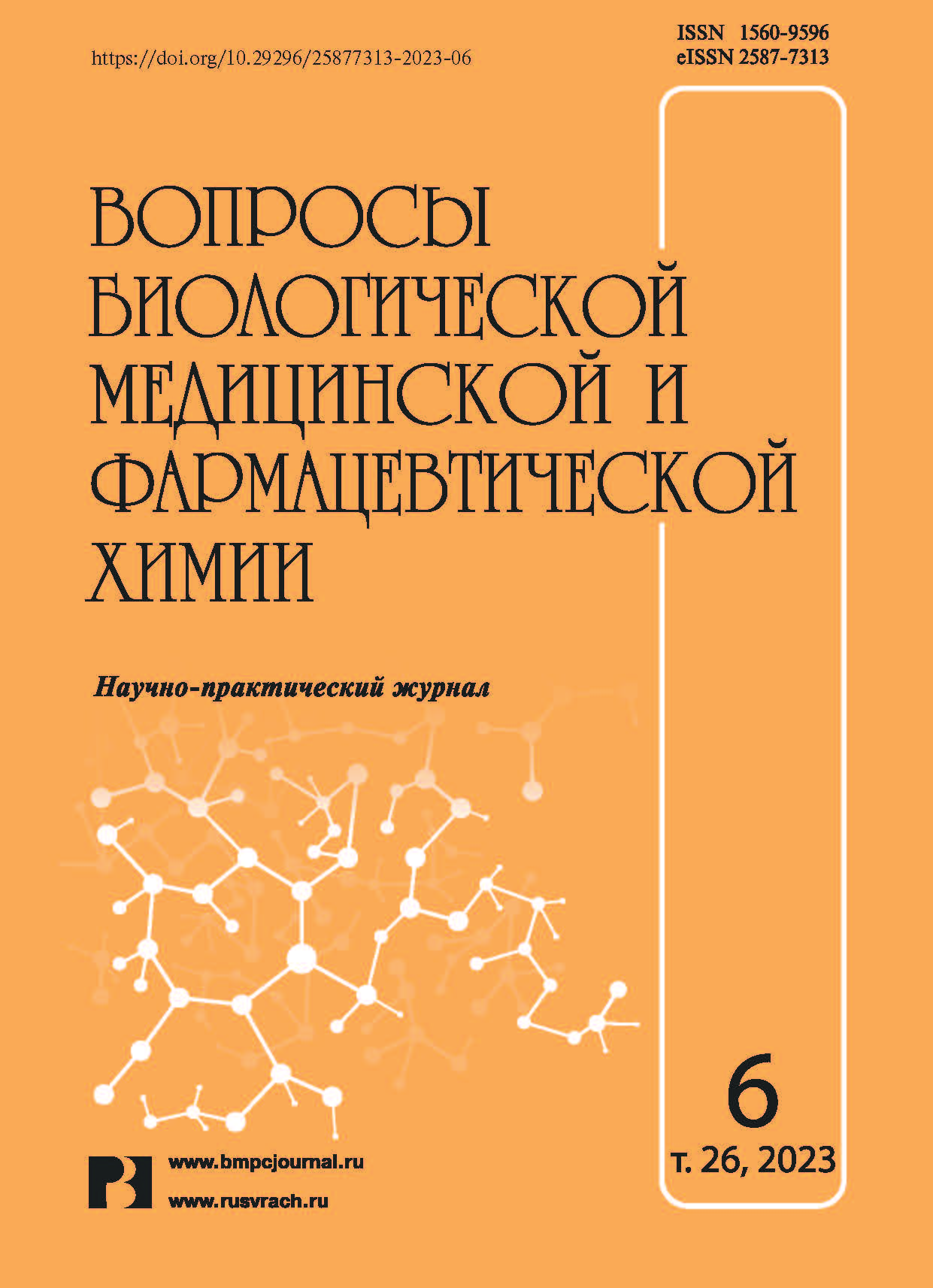Correction of dapsone-induced changes in liver functions by extract of licorice roots naked
- Authors: Genatullina G.N.1, Yasenyavskaya A.L.1, Tsibizova A.A.1
-
Affiliations:
- Astrakhan State Medical University of the Ministry of Health of Russia
- Issue: Vol 26, No 6 (2023)
- Pages: 50-54
- Section: Problems of experimental biology and medicine
- URL: https://journals.eco-vector.com/1560-9596/article/view/516555
- DOI: https://doi.org/10.29296/25877313-2023-06-08
- ID: 516555
Cite item
Abstract
Relevance. To date, much attention is paid to an important aspect of pharmacotherapy aimed at improving the safety of drugs used in various diseases, as well as the search for means of correcting complications that have arisen as a result of the therapy. Antimicrobials occupy one of the leading places in the development of drug disorders on the part of various systems and organs, including the liver. In this regard, it is necessary to use means that correct functional disorders and improve metabolic processes in the liver. Licorice extract (Glycyrrhiza glabra) can be considered as such a remedy.
The aim of the study was to evaluate the effect of licorice extract on dapsone–induced changes in liver function.
Material and methods. All studies were conducted on non-linear white male rats (7 months) weighing 410.0 ± 20.0. The animals in the experiment were divided into groups (n=10): "control" - received purified intragastric water; "dapsone" – rats receiving intragastric dapsone (Novartis; Switzerland) once at a dose of 25 mg/kg for 30 days; "dapsone+licorice" – rats receiving oral dapsone in in the same mode and extract of licorice roots naked at a dose of 50 mg / kg intragastrically 1 time a day for 30 days. After the animals were removed from the experiment, the development of toxic liver damage and the degree of its correction were evaluated by determining the liver weight coefficient, the activity of alanine aminotransferase, aspartate aminotransferase, alkaline phosphatase, gamma-glutamyltransferase, total protein, albumin, total bilirubin.
Results. An analysis of the biochemical parameters of experimental animals with the use of licorice root extract under conditions of dapsone administration for 30 days showed a decrease in the weight coefficient of the liver, levels of total protein and albumin, as well as a significant increase in transaminase activity, an increase in the level of bilirubin.
Conclusion. The results obtained with the use of licorice root extract indicate the presence of hepatoprotective properties, manifested by correction of violations by biochemical parameters (reduced liver weight ratio, total protein and albumin levels, as well as significantly increased transaminase activity and increased bilirubin levels), indicating the development of hepatocellular disorders under the conditions of course administration of dapsone.
Full Text
About the authors
G. N. Genatullina
Astrakhan State Medical University of the Ministry of Health of Russia
Author for correspondence.
Email: genatullina@mail.ru
ORCID iD: 0000-0001-5417-4477
Ph.D. (Biol.), Associate Professor, Department of Pharmacognosy, Pharmaceutical Technology and Biotechnology
Russian Federation, AstrakhanA. L. Yasenyavskaya
Astrakhan State Medical University of the Ministry of Health of Russia
Email: yasen_9@mail.ru
ORCID iD: 0000-0003-2998-2864
Ph.D. (Med.), Associate Professor, Department of Pharmacognosy, Pharmaceutical Technology and Biotechnology
Russian Federation, AstrakhanA. A. Tsibizova
Astrakhan State Medical University of the Ministry of Health of Russia
Email: sasha3633@yandex.ru
ORCID iD: 0000-0002-9994-4751
Ph.D. (Pharm.), Associate Professor, Department of Pharmacognosy, Pharmaceutical Technology and Biotechnology
Russian Federation, AstrakhanReferences
- DalyA K. Genetics of drug-induced liver damage: current knowledge and prospects for the future. Clinical and Translational Science. 2023; 16(1): 37–42; https://doi.org/10.1111/ cts.13424.
- Ejilarasan D. Liver complications caused by dapsone: it's time to think not only about methemoglobinemia. Medicinal and Chemical Toxicology. 2021; 44(3): 330–333; https://doi.org/10.1080/01480545.2019.1679829.
- Colli S., Suhagia. Hypersensitivity syndrome caused by dapsone: a clinical case. International Journal of Fundamental and Clinical Pharmacology. 2020; 9(10): 1609; http://dx.doi.org/10.18203/2319-2003.ijbcp20204106.
- Wahab S., Annadurai S., Abullais S.S., Das G., Ahmad W., Ahmad M.F., Amir M. Glycyrrhiza glabra (Licorice): A comprehensive review on its phytochemistry, biological activities, clinical evidence and toxicology. Plants. 2021; 10(12): 2751; https://doi.org/ 10.3390/plants10122751.
- El-Saber Batiha G., Magdy Beshbishy A., El-Mleeh A., M. Abdel-Daim M., Prasad Devkota H. Traditional uses, bioactive chemical constituents, and pharmacological and toxicological activities of Glycyrrhiza glabra L. (Fabaceae). Biomolecules. 2020; 10(3): 352; https://doi.org/ 10.3390/biom10030352.
- Gera Ruiz A.R., Crespo H., Lopez Martinez R.M., Iruzubieta Casals Mercadal, G., Lalana Garces M., Morales Ruiz M. Measurement and clinical usefulness of bilirubin in liver diseases. Achievements in laboratory medicine. Vacances en Medicina de Laboratorio. 2021; 2(3): 352–361; https://doi.org/10.1515/almed-2021-0047.
- Jia Chen, Lin-Fu Li, Xiaoru Hu, Feng Wei, Shuangcheng Ma. Network pharmacological strategy for elucidating the molecular basis of the pharmacological effects of licorice (Glycyrrhiza spp.). Boundaries of pharmacology. 2021;12:590477; https://doi.org/10.3389/fphar.2021.590477.
Supplementary files







